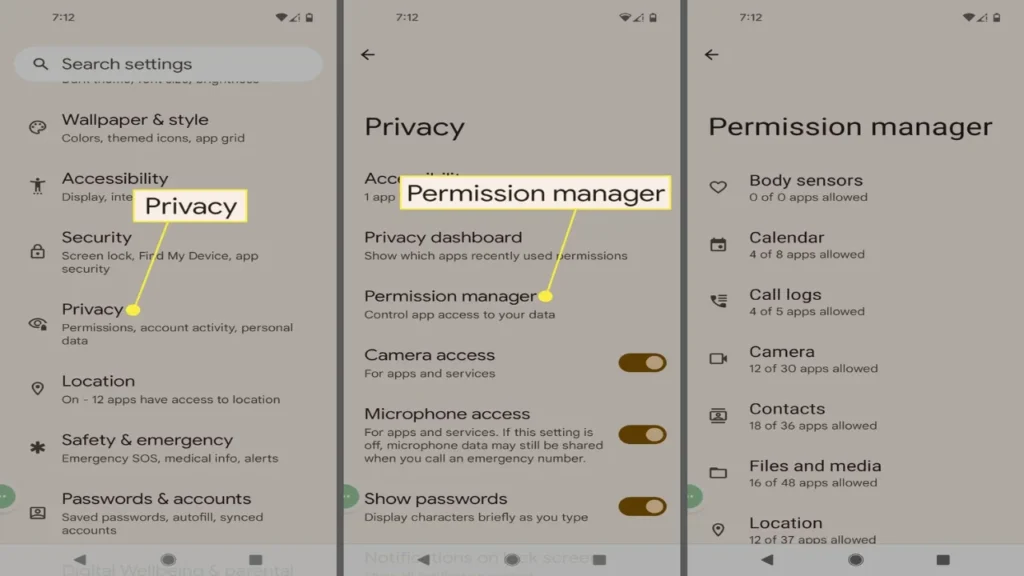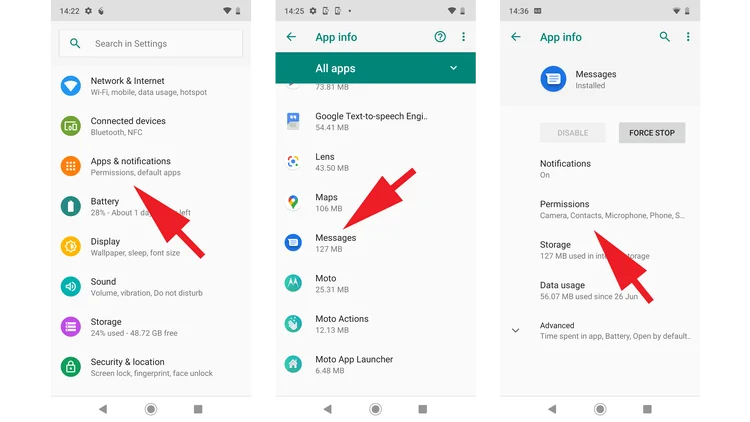Understanding to Change App Permissions on Android

We’ll make sense of How to Change App Permissions on Android. We’ll cover the means, explain why it’s significant, and give extra tips to protect your data. Whether you need to limit permissions or give new access, this article will assist you with exploring Android’s consent framework. Overseeing app permissions on Android gadgets is critical for safeguarding your protection. At the point when you introduce apps, they frequently demand admittance to highlights like your camera, contacts, or area. However, not all apps need admittance to all that they request. Knowing how to change app permissions permits you to control which elements and data apps can get to.
Before diving into the means, it’s critical to comprehend what app permissions are. App permissions permit an app to get to explicit pieces of your telephone, like storage, area, receiver, or contacts. When an app requests authorization, it mentions the capacity to connect with your gadget’s equipment or data. For instance, a camera app needs consent to get to your telephone’s camera, and a route app needs admittance to your area. However, some apps may demand superfluous permissions, raising worries about data protection and abuse. That is the reason changing app permissions is a savvy move toward take.
Types of App Permissions
There are various classes of app permissions on Android, and realizing them assists you with better overseeing what each app can do. These permissions can be comprehensively grouped into two sorts: ordinary permissions and Dangerous permissions.
Ordinary permissions:
Ordinary permissions are less meddlesome and don’t include admittance to delicate data. Apps that demand ordinary permissions can automatically get entrance without requiring client approval. Models incorporate permissions to get to the web or set a caution.
Dangerous Permissions:
Dangerous permissions are more basic since they include delicate data. When an app demands hazardous permissions, Android expects you to allow or deny access physically. These permissions incorporate admittance to your contacts, SMS, camera, and area, from there, the sky is the limit. These are the ones you ought to give close consideration to while overseeing app permissions.
How to Change App Permissions on Android

Now that we’ve talked about why app permissions matter, we should continue toward the means for transforming them on Android. These directions apply to most Android forms, however, a few stages might differ marginally depending upon your gadget’s producer or Android rendition.
Open Settings:
The initial step is to get to your mobile Settings menu. To do this, swipe down from the top of the screen to open the notice board and tap the stuff symbol. On the other hand, you can find the Settings app in your app cabinet.
Go to Apps or Applications:
When you’re in the Settings menu, look down and search for Apps or Applications (the name might differ depending upon your gadget). Tap on it to see a rundown of all the introduced apps on your mobile.
Select the App You Want to Change:
From the rundown of apps, pick the one for which you need to alter permissions. For instance, to change the permissions for a web-based entertainment app, tap on that app.
Tap on Permissions:
After choosing the app, you’ll see a few choices connected with the app’s settings. Search for Permissions and tap on it. This will show you every one of the permissions that the app has mentioned.
Adjust the Permissions:
Now, you can toggle permissions on or off in light of what the app needs. For instance, if the app approaches your camera and you don’t believe it’s essential, switch off that authorization. You can continuously walk out later assuming you change your brain.
In Android’s most recent variants, there are additional choices to permit permissions just while utilizing the app or to ask each time the app needs access. This gives you more control and adaptability.
Managing Permissions for Multiple Apps
If you have any desire to oversee permissions for different apps immediately, Android permits you to see permissions by classification. For instance, to see which apps approach your area or camera, you can channel by those particular permissions.
Open Settings and Go to Permissions Manager:
Go to your phone’s Settings and tap on Security. In some Android forms, it very well might be named as Permissions Supervisor or App Permissions.
Select a Permission Category:
From here, you can see all the authorization classifications, like Camera, Contacts, and Area, and that’s just the beginning. Tap on the classification you need to make due, like Camera.
Modify Permissions for Each App:
You’ll presently see a rundown of all the apps that approach that particular consent. For each app, you can toggle the consent on or off or decide to permit access just while utilizing the app.
Additional Privacy Features in Android
Aside from overseeing app permissions, Android offers other security highlights to additionally safeguard your data. One such component is permissions Auto-Reset. On the off chance that you haven’t utilized an app in some time, Android will automatically disavow its permissions, constraining the app to demand access again when you open it.
Another component is One-Time Permissions, which permits you to allow impermanent admittance to delicate permissions like the microphone or camera. This is valuable for apps you don’t completely trust or don’t utilize frequently.
Controlling System App Permissions
System apps, similar to find out about Play Administrations or pre-introduced apps from the maker, likewise demand permissions. You can change permissions for these apps very much like some other apps. However, some framework app permissions might be fundamental for your gadget to work accurately, so practice alert while evolving them.
For framework apps, you follow similar advances: go to Settings > Apps > select the framework app > Permissions. You can then toggle the permissions given your inclinations. Simply be mindful so as not to handicap fundamental administrations, as this could influence your phone’s exhibition.

Best Practices for Managing App Permissions
To ensure that your data remains secure, here are a few best practices to follow when managing app permissions:
- Before introducing any app from the Google Play Store, pause for a minute to survey the permissions it demands. On the off chance that something appears to be superfluous or obtrusive, reexamine downloading the app.
- Consistently check your apps and repudiate permissions that don’t appear to be pertinent to the app’s center capabilities. For instance, games don’t for the most part require admittance to your contacts.
- Exploit the Permissions Supervisor in Android to monitor and change permissions for explicit classifications like area or camera. This makes it simple to see which apps approach delicate data.
- App designers as often as possible deliver refreshes that incorporate security upgrades and fixes for weaknesses. Keep your apps refreshed to guarantee they follow the most recent security protocols.
- Apps downloaded external to the Google Play Store can be more dangerous, as they may not go through similar security checks. Try not to allow superfluous permissions to outsider apps, and consistently survey their permissions cautiously.
More Queries: How to Install APK Files on Android
Why It’s Important to Change App Permissions
- Changing app permissions is fundamental for keeping up with commands over your data.
- Numerous apps demand permissions that aren’t required for their center capabilities.
- Which could prompt security chances.
- By changing permissions, you can guarantee that apps just approach what they need.
- For example, a spotlight app shouldn’t require admittance to your contacts or area.
- By denying pointless permissions, you diminish the gamble of data assortment or abuse.
- Furthermore, overseeing permissions can assist with further developing gadget execution and save battery duration by restricting foundation exercises.
Conclusion
Changing app permissions on Android is an imperative move toward keeping up with your security and safeguarding your data. By following the straightforward advances framed in this aide, you can assume command over which apps approach your data. Routinely checking on and overseeing app permissions protects your security as well as works on your phone’s exhibition.
Android’s authorization framework gives you the adaptability to change permissions given your solace level, whether you favor severe control or more comfort. Also, Android’s implicit protection highlights, for example, Consent Auto-Reset and Once Permissions, add a layer of safety.
By remaining educated and careful, you can partake in the maximum capacity of your Android gadget while protecting your data.




